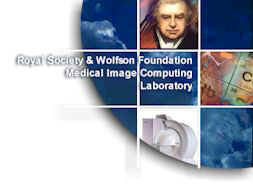Pictorial Diary of the Latest Progress on MIC Laboratory Refurbishment

The recent establishment of the Imperial College School of Medicine has created an increasing demand for the advancement of medical imaging based on interdisciplinary research collaborations. The Department of Computing has already established a leading role in this field, and the new laboratory was designed to provide much needed facilities for expanding their collaborative research activities with the medical community. The laboratory is housed within the Visual Information Processing (VIP) Research Group and this new facility is to enhance the group's research capabilities in Medical Image Computing, Perceptual Intelligence, Augmented Reality, and new sensing technology. The project was supported by two Nobel Laureates, Sir Godfrey Hounsfield, who invented Computed Tomography, and Sir John Vane, who discovered the wide role of prostaglandins in the human body. The new lab was formally opened on 7th March, 2001 by Sir John and Sir Godfrey.
In 2002, the group received a significant further funding from the Wolfson Foundation. The funding was awarded to Professor Guang-Zhong Yang, Professor Sir Ara Darzi, and Professor Chris Toumazou in recognising their collaborative effort in multidisciplinary research in surgical technology and imaging. It recognises the fact that recent technological advances in surgery have resulted in the development of a broad range of new techniques that have reduced patient trauma, shortened hospitalisation, and improved diagnostic accuracy and therapeutic outcome. They have enabled the development and clinical applications of minimally invasive procedures, computer assisted surgery and medical robotics. This decade is likely to witness an accelerated development in these research and development areas, driven by the maturity of instrument design, versatility of imaging techniques, rapid advancement of biotechnology and computer science, nd our relentless efforts in establishing localized genesis and progression of diseases. The future of surgery is leading towards a closer integration of information technology, biotechnology and physical sciences. The Wolfson funding will create a laboratory space across the St Mary's and South Kensington Campuses, breaking the barrier of conventional isolated working pattern of conducting multidisciplinary research. It allows free interaction of staff and students in addressing fundamental research issues related to the future development of minimally invasive surgery and promote an Imperial College wide synergy in areas of Surgical Oncology and Technology, Medical Image Computing, Biomedical Engineering, Robotics, Man-Machine Interfacing, Virtual/Augmented Reality and Bio-Medical Simulation.